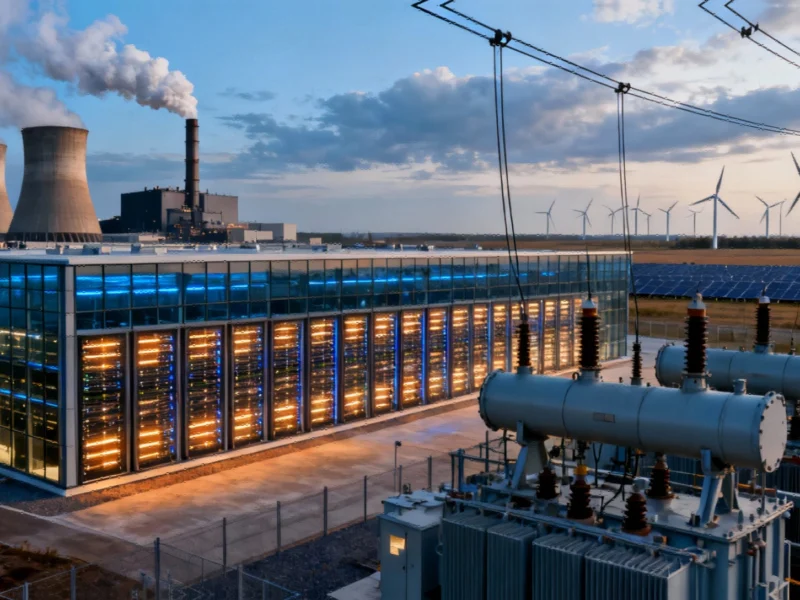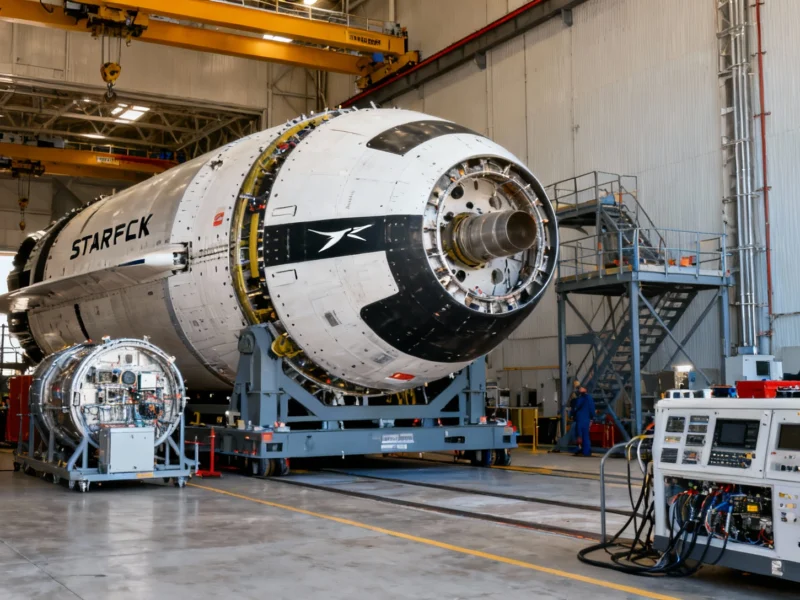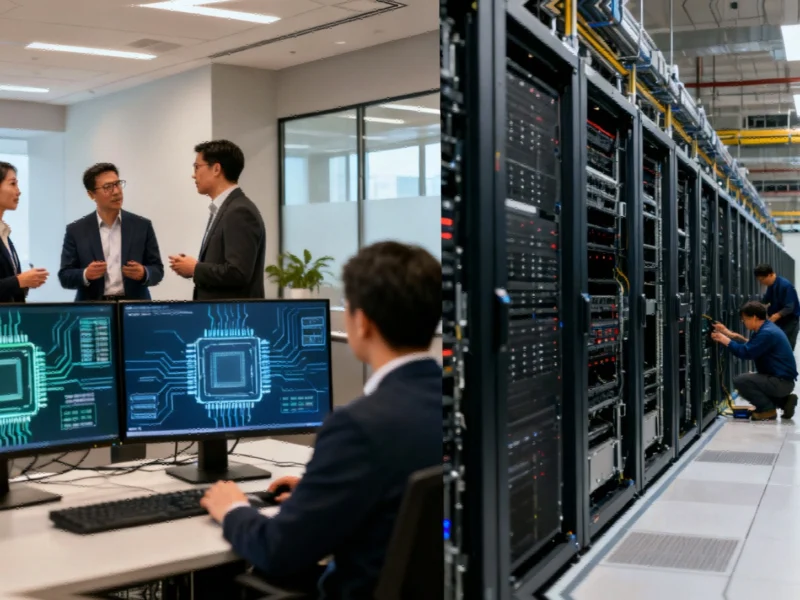The Unprecedented Energy Demand of AI Expansion
As artificial intelligence becomes increasingly integrated into business operations and daily life, technology giants including Microsoft, Google, and Amazon are racing to construct massive data centers to support this digital transformation. This infrastructure boom, while driving technological advancement, carries significant environmental and economic implications that are beginning to reshape American communities and policy debates. The scale of this expansion is staggering, with projections indicating data centers could consume triple their current electricity share within just six years.
The environmental footprint of these facilities extends beyond energy consumption to include substantial water usage for cooling systems. As highlighted in a recent analysis of AI data center expansion, communities in regions like Virginia’s “Data Center Alley” are already experiencing the tangible effects of this growth, raising questions about sustainable development practices in the technology sector.
Power Generation at a Crossroads
According to McKinsey research, meeting the projected electricity demand from data centers will require generating considerably more power than the United States currently produces. This unprecedented spike in energy needs comes at a pivotal moment for the nation’s energy policy, with competing visions for how to address the shortfall.
The Trump administration has championed fossil fuels as the solution, with the former president dismissing renewable alternatives like wind and solar as impractical. This stance has already influenced energy markets, with coal generation forecasts ticking upward after years of decline. The administration’s position aligns with broader deregulation priorities in the energy sector that aim to accelerate infrastructure development.
Environmental Impact and Climate Concerns
The International Energy Agency has issued warnings about the potential consequences of powering data centers primarily with fossil fuels. Current projections suggest greenhouse gas emissions from facilities supporting data operations could double by 2035 if current trends continue. This environmental cost adds another layer to the complex calculation of AI’s true impact.
While technology companies are working to improve efficiency and some are pursuing renewable energy options, the rapid pace of AI adoption threatens to outstrip these gains. The situation mirrors challenges seen in other industries, such as the broader automotive sector where rapid technological advancement sometimes precedes comprehensive environmental considerations.
Economic Consequences for American Households
For ordinary Americans, the data center boom translates to tangible financial pressures. Recent analysis indicates electricity costs could rise by an average of 8% nationally over the next five years directly because of the infrastructure demands of new data facilities. These increases come at a particularly sensitive time, with households already grappling with persistent inflation across multiple sectors.
The financial impact extends beyond residential electricity bills to include public resources. Local governments face difficult decisions about allocating water resources and funding transmission infrastructure upgrades. These economic pressures are creating unusual political alliances, with both Republican and Democratic voters expressing concerns about data center development in their communities.
Political Implications and Policy Responses
The data center expansion is creating unexpected political dynamics, cutting across traditional party lines. While the Trump administration has positioned itself as a champion of AI development and the infrastructure to support it, voters in key districts—including traditionally Republican areas—are expressing reservations about local data center projects.
This tension between national technology priorities and local concerns reflects broader patterns in technology policy, similar to developments in healthcare technology and pharmaceutical sectors where rapid innovation sometimes outpaces public consensus. The situation also parallels strategic moves in industrial computing where leadership recognition often follows significant infrastructure development.
Regional Cooperation and International Context
As the United States grapples with these challenges, it’s worth noting that other regions are developing coordinated approaches to energy and technology infrastructure. The power agreements between Singapore and Malaysia demonstrate how strategic partnerships can address similar infrastructure demands. Meanwhile, in the financial technology sector, companies like Kraken are making significant investments to position themselves for future growth, highlighting how various industries are adapting to technological transformation.
Balancing Progress and Sustainability
The central challenge emerging from the data center expansion involves balancing technological advancement with environmental responsibility and economic fairness. While AI promises significant benefits across multiple sectors, the infrastructure required to support it carries substantial costs that are increasingly borne by communities and households.
Unlike previous technology booms, the data center expansion occurs amid heightened awareness of climate change and energy sustainability. This context ensures that decisions about how to power these facilities will have lasting consequences beyond immediate economic considerations, potentially influencing America’s ability to meet its climate commitments while maintaining technological leadership.
As the debate continues, it’s clear that cost of living concerns rather than abstract environmental arguments may ultimately shape the trajectory of data center development. The coming years will test whether technological innovation can be reconciled with environmental stewardship and economic equity—a challenge that extends far beyond data centers to encompass America’s broader relationship with technology and progress.
Based on reporting by {‘uri’: ‘theguardian.com’, ‘dataType’: ‘news’, ‘title’: ‘The Guardian’, ‘description’: “Latest news, sport, business, comment, analysis and reviews from the Guardian, the world’s leading liberal voice”, ‘location’: {‘type’: ‘place’, ‘geoNamesId’: ‘2643743’, ‘label’: {‘eng’: ‘London’}, ‘population’: 7556900, ‘lat’: 51.50853, ‘long’: -0.12574, ‘country’: {‘type’: ‘country’, ‘geoNamesId’: ‘2635167’, ‘label’: {‘eng’: ‘United Kingdom’}, ‘population’: 62348447, ‘lat’: 54.75844, ‘long’: -2.69531, ‘area’: 244820, ‘continent’: ‘Europe’}}, ‘locationValidated’: False, ‘ranking’: {‘importanceRank’: 13059, ‘alexaGlobalRank’: 192, ‘alexaCountryRank’: 117}}. This article aggregates information from publicly available sources. All trademarks and copyrights belong to their respective owners.



